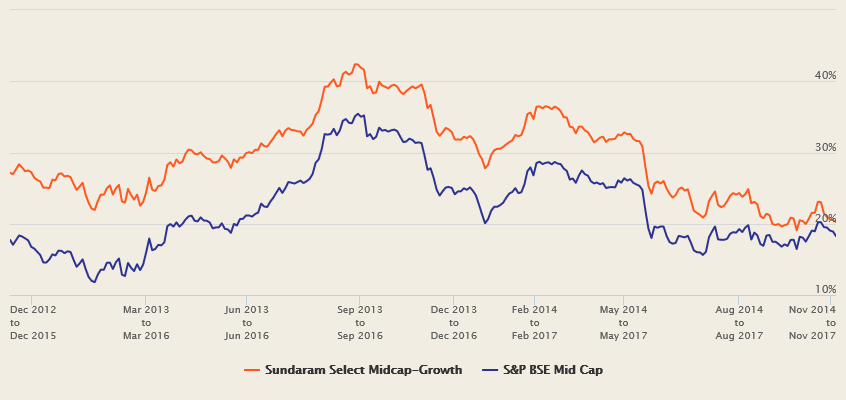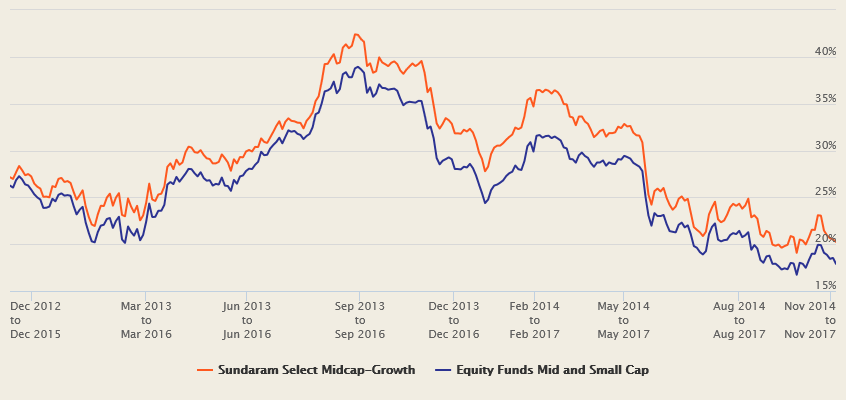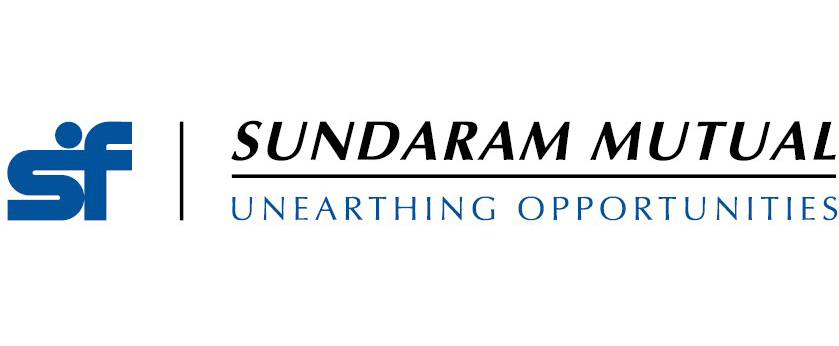Which return to use for selecting the best mutual funds: Part 3

We get many queries on www.advisorkhoj.com from investors asking us, which is the best mutual fund to invest or which is the best investment solution for their requirements? The quest for the best or perfect is understandable but mostly elusive. Years of experience has taught me that there is no perfect investment solution which will stand the test of time especially in capital markets because markets are stochastic in nature; it is impossible to predict what will happen in the future.
In the previous two posts in this series, which return to use for selecting mutual funds - Part 1 and which return to use for selecting best mutual funds – Part 2, we discussed about different types of mutual fund returns and their usefulness in making investment decisions.
As regards to which is the best return measure, because investors want to know what is best, you should understand that different methodologies have their own strengths and limitations. Trailing returns show how mutual fund schemes are doing currently and over a period of time, but it suffers from a recency bias. Point to point and annual returns show how schemes performed in different market conditions, but they are influenced by market conditions in the said periods. Sharpe Ratio shows a scheme’s risk adjusted performance over a certain period, but it is difficult to comprehend and does not give investors a sense of returns generated. You can analyze different type of returns of a scheme to evaluate its performance on multiple parameters.
In Advisorkhoj, we try to look for solutions that are meet a variety of investment objectives, easy to comprehend and most importantly, are unbiased.
The final part of this blog post will be dedicated to just one type of return, which we in Advisorkhoj think, is the most useful and effective of all returns measures.
Rolling Returns of mutual funds
Most investment experts over the world now agree that rolling return is the most unbiased (by stock market conditions) and effective performance evaluation metric. We are very proud that, www.advisorkhoj.com is one of the very few mutual fund content and research portals in India which has rolling returns research capabilities (we have multiple rolling return tools in our Research) and we use rolling returns extensively in our content.
Rolling return versus category
Rolling return versus benchmark
Rolling return versus other benchmark
Rolling return comparison with Sensex, benchmark and gold
I have often wondered why other mutual fund content and research portals do not use rolling returns as extensively as we do, even though many of these portals profess that rolling returns is probably the best performance measure of mutual funds. I believe that the reason is two fold. Firstly, rolling returns may be difficult to understand at first for investors who are new to the concept. Secondly, calculating rolling returns of mutual fund schemes, though not very complex, can be a little resource intensive from a computing technology perspective.
These challenges notwithstanding, it is our mission in www.advisorkhoj.com to educate mutual fund investors and financial advisors about the best research techniques, so that they can make investment decisions which is best suited for their needs. What is very encouraging for us is that traffic statistics on our portal shows that, many investors and financial advisors are using our mutual fund rolling returns tool on a regular basis.
While it may take a little bit of time to get used to our various mutual fund rolling returns tools, once you get used to it, you will find that rolling return is one of the most, if not the most, useful tools to understand the performance of a mutual fund scheme relative to its benchmark or to its peers. We will try to explain to our readers, how to make best use of mutual fund rolling returns tool for their investment decisions.
What is Rolling Return?
Rolling returns are the annualized returns of the mutual fund scheme for specific investment tenures (known as rolling returns periods) on every day from any start date to the most recent date. For example - 3 year rolling returns of a scheme from 1/1/2010 will be the annualized returns of the scheme from 1/1/2010 to 1/1/2013, 2/1/2010 to 2/1/2013, 3/1/2010 to 3/1/2013 and so on so forth till 9/11/2014 to 9/11/2017 (today’s date). 5 year rolling returns of a scheme from 1/1/2010 will be the annualized returns of the scheme from 1/1/2010 to 1/1/2015, 2/1/2010 to 2/1/2015, 3/1/2010 to 3/1/2015 and so on so forth till 9/11/2012 to 9/11/2017 (today’s date).
Unlike trailing returns, rolling returns of mutual funds do not suffer from any recency bias as it shows returns of a scheme in different market conditions. Rolling returns of a mutual fund scheme are usually shown versus the scheme benchmark or the scheme category. Rolling returns show how consistently the fund has performed in different market conditions versus the benchmark or the category. Regular readers on our website know that, consistency is the most performance characteristic of mutual funds. Historical performance analysis shows that, consistent performers usually give superior returns in the long term.
Rolling returns are usually showed graphically as a line chart because visual interpretation is easier with a chart. However, on Advisorkhoj.com portal, we also show rolling returns versus benchmark in tabular form, with rolling returns of the scheme for every day from the chosen start date versus the benchmark. We also show some useful rolling returns parameters on our portal. In Advisorkhoj.com, the two most popular rolling returns tools are Rolling Returns versus the benchmark and Rolling Returns versus the category.
Rolling Returns versus the Benchmark
In this tool, we show rolling returns of a scheme versus its benchmark (click on the link to see the Rolling Returns versus Benchmark tool on our website). You have to input the scheme name, the start date and rolling returns period. The rolling returns period should match with your desired investment horizon.
For equity funds, we recommend a long investment horizon of at least 3 years or more. The start date should be sufficiently long back in the past, to see the performance of the fund under different market conditions. But do not choose a start date, way too back in the past, because the scheme investment characteristics and fund manager may have changed during the period. A start date, 5 to 7 years prior to the current date, is a good starting point for rolling returns because a period of 5 years or more is likely to include at least one bear market. You should try to ensure that the start date does not begin before the tenure of the current fund manager of the scheme.
The chart below shows the 3 year rolling returns (you can choose a longer period if you want) of Sundaram Select Midcap Fund (Growth Option) from 8/11/2012. S. Krishnakumar has been managing this scheme from January 2012, so the rolling returns analysis coincides with his tenure at the helm of the fund. 2012 to 2017 is a 5 year period over which the stock market experienced different conditions.

Source: Advisorkhoj Rolling Returns Calculator
You can see in the chart above that the 3 year rolling returns of the fund ranged between 20 to 40%. Observe that, the scheme (orange line) consistently beat the benchmark (blue line) during this period. This shows strong fund management performance.
Rolling Returns versus the Category
In this tool, we show rolling returns of a scheme versus its category (click on the link to see the Rolling Returns versus Category tool on our website). In this tool, you have to select funds category (large cap, small and midcap, diversified, balanced, ELSS etc), the scheme name, the start date and rolling returns period. We selected Small and Midcap category, Sundaram Select Midcap Fund (like in the previous example), 8/11/2012 as start date (like in the previous example) and 3 year rolling returns period (like in the previous example). The chart below shows the 3 year rolling returns of the fund over the last 5 years.

Source: Advisorkhoj Rolling Returns Calculator
As you can see in the chart above that, Sundaram Select Midcap Fund beat the category consistently over the last 5 years. This tool also has some useful Rolling Returns parameters like Average Rolling Returns, Median Rolling Returns, Maximum Rolling Returns and Minimum Rolling Returns. These parameters summarize a fund’s performance in different market conditions.
While I personally prefer graphical presentation of rolling returns because it is easier for me to comprehend from visual examination, a few readers suggested to us that they would like to see a tabular presentation of rolling returns. Taking our reader’s suggestions, we also show a tabular presentation of the rolling returns. You can see rolling returns in a tabular format by clicking on the orange button “See Rolling Returns in tabular format” in the right hand corner below the chart and the rolling returns parameters table.
Using our rolling returns tool, you can compare the rolling returns performance of two or more schemes. Apart from rolling returns versus benchmark and category tools, we have developed a few other rolling returns tools like rolling returns versus unified category benchmark and rolling returns versus different other asset classes. Play around with these tools and hopefully you will find them interesting.
Conclusion
We urge our readers to use mutual fund rolling returns tools on our website to evaluate the performance of mutual fund schemes they have invested in or where they plan to invest. Even though rolling returns may seem a little difficult to understand at first, if you re-read this article, hopefully many of your doubts will go away and as always, feel free to write to us if you need clarifications. Through application, we hope you will soon get comfortable with using mutual fund rolling returns tools to evaluate mutual fund performance and you will see that rolling returns provide very useful insights into a mutual fund scheme’s performance.
Mutual Fund Investments are subject to market risk, read all scheme related documents carefully.
RECOMMENDED READS
Sundaram Asset Management Company is the investment manager to Sundaram Mutual Fund. Founded 1996, Sundaram Mutual is a fully owned subsidiary of one of India's oldest NBFCs - Sundaram Finance Limited.
Quick Links
- Interview - Mr. Dwijendra Srivastava - CIO - Fixed Income
- Interview - Mr. Sunil Subramaniam - CEO
- Sundaram Select Midcap Fund: Consistent outperformance makes it a big wealth creator
- Interview - Mr. Sunil Subramaniam - CEO
- Fund Manager Interview - Mr. Krishna Kumar - CIO - Equities
- Sundaram Rural India Fund: This thematic Mutual Fund aiming good long term returns
- Sundaram Equity Multiplier: Long term wealth creation potential
- Our Articles
- Our Website
- SIP one sheeter-Investor Education initiative
- Sundaram Asset Management Singapore
- Returns Calculator
- SEBI Investor Awareness Initiative
- Check your KYC Status
- KYC Forms & FAQs
- Recieve your PIN
- A note on NIGO
- FAQs on RGESS
- FAQs on Direct Plan
- Receive Updates
- Share your views
- Transmission Checklist
- Equity Application Form
- Fixed Income Application Form
- Transaction Slip
- Factsheet May - 2016
- MF Tax Reckoner 2015
Follow Sundaram MF
More About Sundaram MF
POST A QUERY




